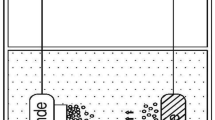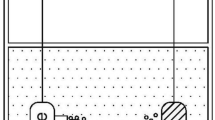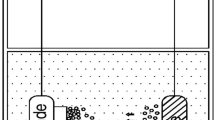Abstract
Numerous energy systems, including distillation, power production, air conditioning, cooling, and purification, use evaporation and flow boiling in minichannels. In this study, we show noticeably higher heat transfer coefficients and critical heat flux of 182% and 114% during DI water flow boiling in ZnO-nano-thin-film nanostructured (∼110–423 nm), industrial-scale-heated copper bottom surface. By using a combination of the sol–gel spin coating and annealing methods, we produce durable and highly conformal nanostructured surfaces that enable scale nano-manufacturing. Flow boiling experiments were carried out in 1.5 mm height bottom surface-heated minichannel using DI water as the working fluid. In order to measure the effectiveness of present method and clarify how the structural length scale affects it, the present study ZnO-nano-thin-film structured surfaces are compared with previously published micro/nano-scale fabricated surfaces, demonstrating the necessity and importance of the nanoscale properties of ZnO-nano-thin films for improvement. The surfaces of the nano-thin film were subjected to durability testing utilizing a seven-day continuous flow boiling experiment, which revealed minor deterioration. The higher boiling performance is achieved on ZnO-TF-423 is due to the proper bonding between polished copper bare surface (BS) and deposited ZnO thin films. Additionally, the rough surface on BS allows the copper and ZnO thin films to bind properly. It can be concluded that surfaces made using an efficient sol–gel spin coating process possesses superior boiling heat transfer capabilities at comparatively lower surface temperatures, suggesting a smaller chance of damaging the surface from rising temperatures.














Similar content being viewed by others
Availability of data and materials
Data and materials will be provided on request.
Abbreviations
- A cs :
-
Cross-sectional area
- h :
-
Heat transfer coefficient
- I :
-
Current
- k :
-
Thermal conductivity
- q :
-
Heat flux
- T fa :
-
Average fluid temperature
- T s :
-
Boiling surface temperature
- T in :
-
Fluid inlet temperature
- T out :
-
Fluid outlet temperature
- V :
-
Voltage
- BHT:
-
Boiling heat transfer
- CHF:
-
Critical heat flux
- EDM:
-
Electric discharge machining
- HTC:
-
Heat transfer coefficient
References
Collaudin B, Rando N. Cryogenics in space: a review of the missions and of the technologies. Cryogenics. 2000;40:797–819.
Hung T-C, Shai T, Wang SK. A review of organic rankine cycles (ORCs) for the recovery of low-grade waste heat. Energy. 1997;22:661–7.
Mumraiz S, Ali A, Awais M, Shutaywi M, Shah Z. Entropy generation in electrical magnetohydrodynamic flow of Al2O3–Cu/H2O hybrid nanofluid with non-uniform heat flux. J Therm Anal Calorim. 2021;143:2135–48.
Tassaddiq A, Khan S, Bilal M, Gul T, Mukhtar S, Shah Z, Bonyah E. Heat and mass transfer together with hybrid nanofluid flow over a rotating disk. AIP Adv. 2020;10(5).
El-Dessouky HT, Ettouney HM. Fundamentals of salt water desalination. Elsevier; 2002.
Bose S, Kuila T, Nguyen TXH, Kim NH, Lau K-T, Lee JH. Polymer membranes for high temperature proton exchange membrane fuel cell: recent advances and challenges. Prog Polym Sci. 2011;36:813–43.
Earle MJ, Esperanca JM, Gilea MA, Lopes JNC, Rebelo LP, Magee JW, Seddon KR, Widegren JA. The distillation and volatility of ionic liquids. Nature. 2006;439:831–4.
Armarego WL. Purification of laboratory chemicals. Butterworth-Heinemann; 2017.
Agonafer D, Spector MS, Miljkovic N. Materials and interface challenges in high vapor quality two-phase flow boiling research. IEEE Trans Compon Packag Manuf Technol. 2021. https://doi.org/10.1109/TCPMT.2021.3085255.
Mousa MH, Miljkovic N, Nawaz K. Review of heat transfer enhancement techniques for single phase flows. Renew Sustain Energy Rev. 2021;137: 110566.
Saitoh S, Daiguji H, Hihara E. Effect of tube diameter on boiling heat transfer of R-134a in horizontal small-diameter tubes. Int J Heat Mass Transf. 2005;48:4973–84.
Baliga BJ. Gallium nitride and silicon carbide power devices. World Scientific Publishing Company; 2016.
Wei J. Challenges in cooling design of CPU packages for high-performance servers. Heat Transfer Eng. 2008;29:178–87.
Singh SK, Sharma D. Review of pool and flow boiling heat transfer enhancement through surface modification. Int J Heat Mass Transf. 2021;1(181): 122020.
Li D, Wu G, Wang W, Wang Y, Liu D, Zhang D, Chen Y, Peterson G, Yang R. Enhancing flow boiling heat transfer in microchannels for thermal management with monolithicallyintegrated silicon nanowires. Nano Lett. 2012;12:3385–90.
Zhu Y, Antao DS, Chu K-H, Chen S, Hendricks TJ, Zhang T, Wang EN. Surface structure enhanced microchannel flow boiling. J Heat Transf. 2016;138: 091501.
Shin S, Choi G, Kim BS, Cho HH. Flow boiling heat transfer on nanowire-coated surfaces with highly wetting liquid. Energy. 2014;79:428–35.
Sun B, Yang D. Flow boiling heat transfer characteristics of nano-refrigerants in a horizontal tube. Int J Refrig. 2014;38:206–14.
Sun Z-C, Ma X, Ma L-X, Li W, Kukulka DJ. Flow boiling heat transfer characteristics in horizontal. Three-Dimens Enhanc Tubes Energ. 2019;12:927.
Kaya A, Demiryurek R, Armagan E, Ozaydin-Ince G, Sezen M, Kosar A. Boiling heat transfer enhancement in mini/microtubes via polyhydroxyethylmethacrylate (pHEMA) coatings on Inner Microtube Walls at High Mass Fluxes. J Micromech Microeng. 2013;23: 115017.
Bai P, Tang T, Tang B. Enhanced Flow Boiling In Parallel Microchannels With Metallic Porous Coating. Appl Therm Eng. 2013;58:291–7.
Morshed A, Paul TC, Khan J. Effect of Cu−Al2O3 nanocomposite coating on flow boiling performance of a microchannel. Appl Therm Eng. 2013;51:1135–43.
Singh SK, Sharma D, Singh AK. Numerical Investigation on Pool Boiling Heat Transfer of Silica and Alumina Nanofluids. Heat Transf Eng. 2023;(just-accepted):1–37.
Oudah SK, Fang R, Tikadar A, Salman AS, Khan JA. An experimental investigation of the effect of multiple inlet restrictors on the heat transfer and pressure drop in a flow boiling microchannel heat sink. Int J Heat Mass Transf. 2020;153: 119582.
Khodakarami S, Zhao H, Rabbi KF, Miljkovic N. Scalable corrosion-resistant coatings for thermal applications. ACS Appl Mater Interfaces. 2021;13:4519–34.
Sarwar MS, Jeong YH, Chang SH. Subcooled flow boiling CHF enhancement with porous surface coatings. Int J Heat Mass Transf. 2007;50:3649–57.
Deb S, Das M, Das DC, Pal S, Das AK, Das R. Significance of surface modification on nucleate pool boiling heat transfer characteristics of refrigerant R-141b. Int J Heat Mass Transf. 2021;170:120994.
Ma J, Cahill DG, Miljkovic N. Condensation induced blistering as a measurement technique for the adhesion energy of nanoscale polymer films. Nano Lett. 2020;20:3918–24.
Chu K-H, Soo Joung Y, Enright R, Buie CR, Wang EN. Hierarchically structured surfaces for boiling critical heat flux enhancement. Appl Phys Lett. 2013;102:151602.
Gupta SK, Misra RD. Flow boiling heat transfer performance of copper-alumina micro-nanostructured surfaces developed by forced convection electrodeposition technique. Chem Eng Process. 2021;164:108408.
Gupta SK, Misra RD. An experimental investigation on flow boiling heat transfer enhancement using Cu-TiO2 nanocomposite coating on copper substrate. Exp Therm Fluid Sci. 2018;98:406–19.
Holman JP. Experimental Methods for Engineers. 7th ed. Tata McGraw Hill Education Private Limited; 2007.
Kim YH, Lee KJ, Han D. Pool boiling enhancement with surface treatments. Heat Mass Transf. 2008;45:55–60.
Jones BJ, McHale JP, Garimella SV. The influence of surface roughness on nucleate pool boiling heat transfer. J Heat Transf. 2009;131:1–14.
Pioro IL, Rohsenow W, Doerffer SS. Nucleate pool boiling heat transfer I: review of parametric effects of boiling surface. Int J Heat Mass Transf. 2004;47:5033–44.
Gorenflo D, Chandra U, Kottoff S, Luke A. Influence of thermophysical properties on pool boiling of refrigerants. Int J Ref. 2004;27:492–502.
Hsu Y. On the size range of active nucleation cavities on a heating surface. J Heat Transf. 1962;84:207.
Sajjad U, Sadeghianjahromi A, Ali HM, Wang C-C. Enhanced pool boiling of dielectric and highly wetting liquids-a review on enhancement mechanisms. Int Commun Heat Mass Transf. 2020;119: 104950.
Thorncroft G, Klausner J, Mei R. Suppression of flow boiling nucleation. J Heat Transf. 1997;119:517.
Liang G, Mudawar I. Review of nanoscale boiling enhancement techniques and proposed systematic testing strategy to ensure cooling reliability and repeatability. Appl Therm Eng. 2020;184: 115982.
Gupta SK, Misra RD. An experimental investigation on pool boiling heat transfer enhancement using Cu-Al2O3 nano-composite coating. Exp Heat Transf. 2019;32:133–58.
Jo H, Ahn HS, Kang S, Kim MH. A study of nucleate boiling heat transfer on hydrophilic, hydrophobic and heterogeneous wetting surfaces. Int J Heat Mass Transf. 2011;54:5643–52.
Sujith Kumar CS, Suresh S, Yang Q, Aneesh CR. An experimental investigation on flow boiling heat transfer enhancement using spray pyrolysed alumina porous coatings. Appl Therm Eng. 2014;71:508–18.
Acknowledgements
The authors gratefully acknowledge to NIT, Silchar, India for financial support.
Funding
No funding used for this work.
Author information
Authors and Affiliations
Contributions
Both authors have equal contribution in this work.
Corresponding author
Ethics declarations
Conflict of interest
The authors have no conflicts of interest to declare.
Consent for publication
This paper has not been submitted or published to another journal.
Additional information
Publisher's Note
Springer Nature remains neutral with regard to jurisdictional claims in published maps and institutional affiliations.
Rights and permissions
Springer Nature or its licensor (e.g. a society or other partner) holds exclusive rights to this article under a publishing agreement with the author(s) or other rightsholder(s); author self-archiving of the accepted manuscript version of this article is solely governed by the terms of such publishing agreement and applicable law.
About this article
Cite this article
Gupta, S.K., Misra, R.D. Role of ZnO-nano-thin-film-layered micro/nanostructured surfaces on flow boiling heat transfer characteristics. J Therm Anal Calorim 149, 1267–1281 (2024). https://doi.org/10.1007/s10973-023-12766-1
Received:
Accepted:
Published:
Issue Date:
DOI: https://doi.org/10.1007/s10973-023-12766-1




